
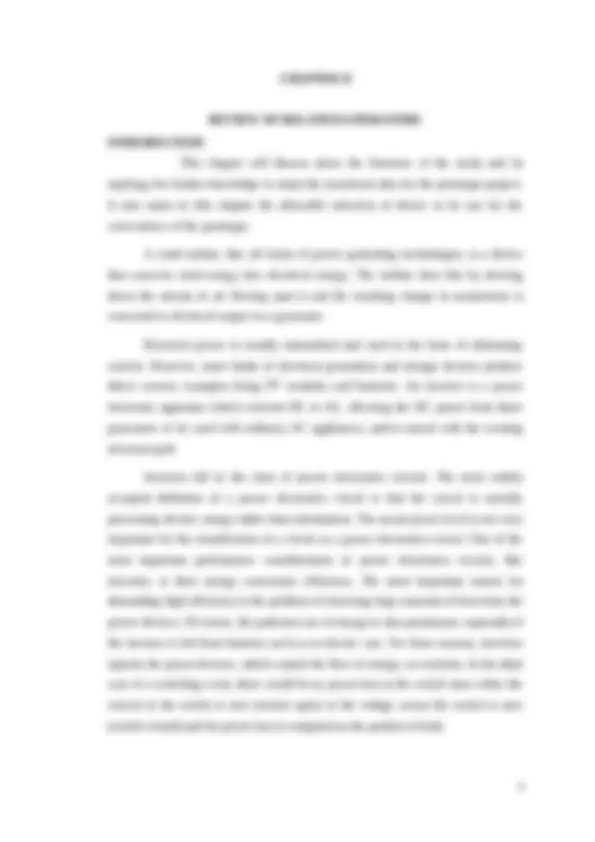
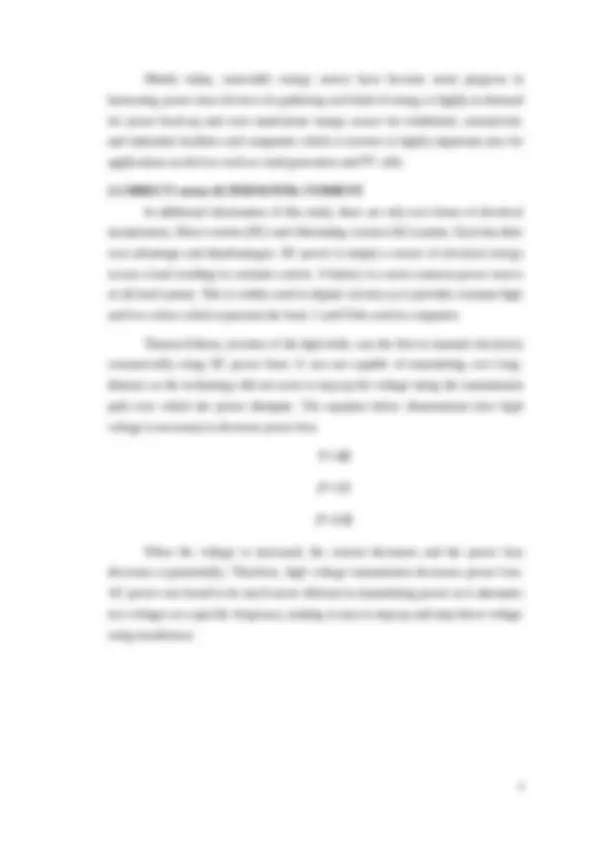
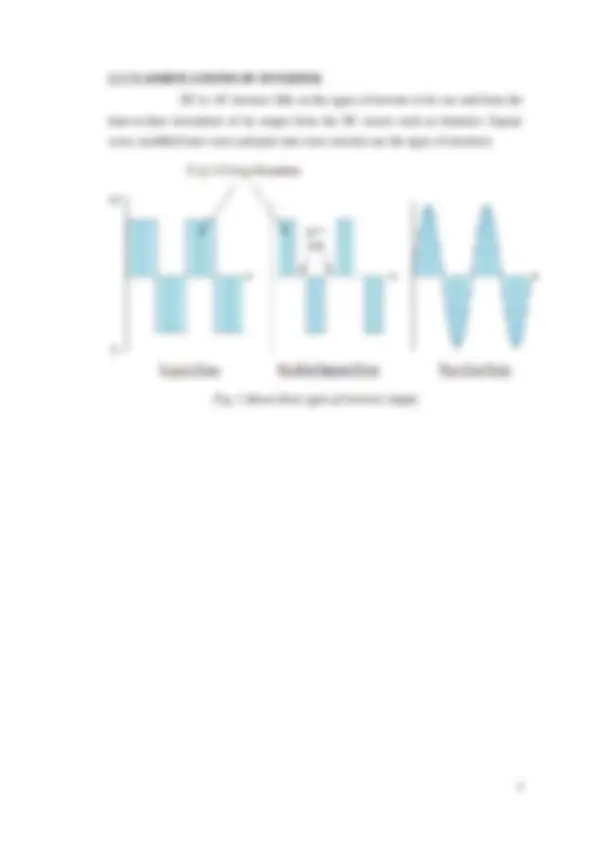
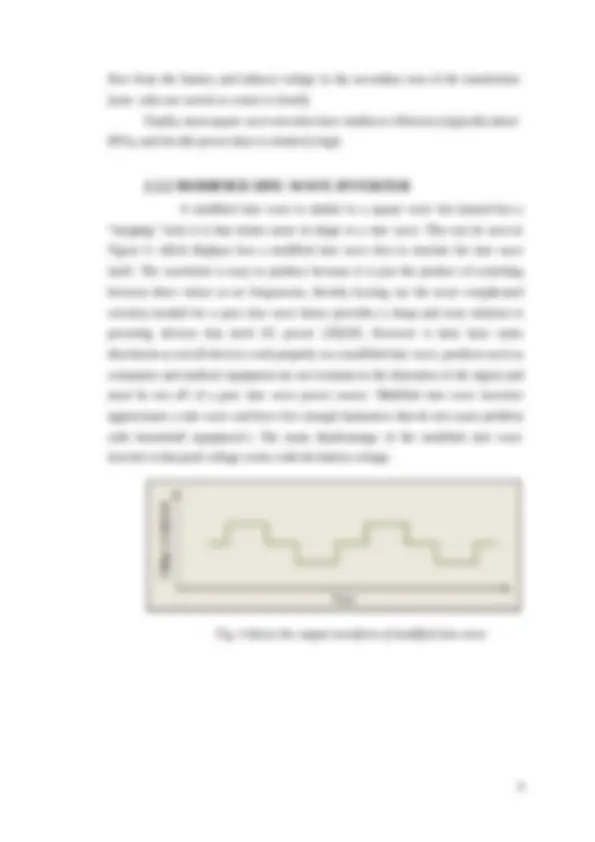
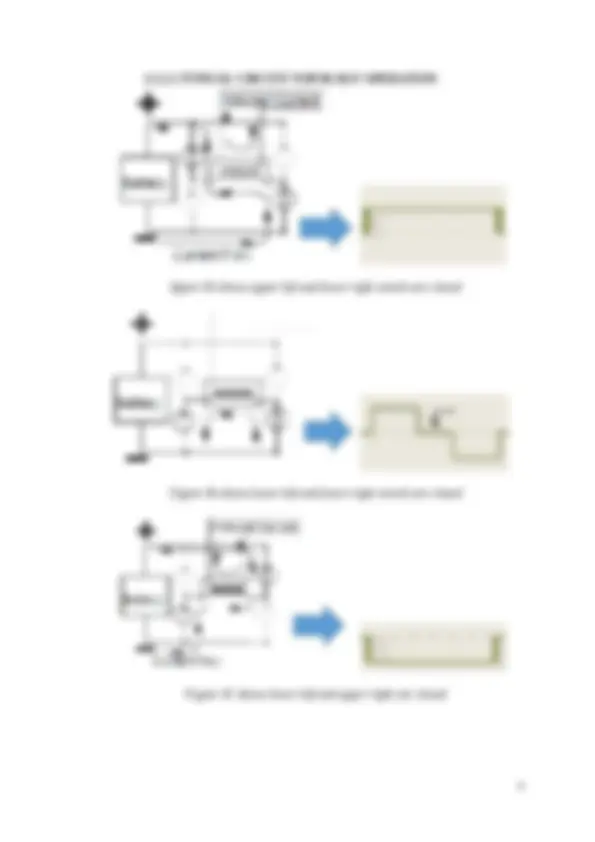

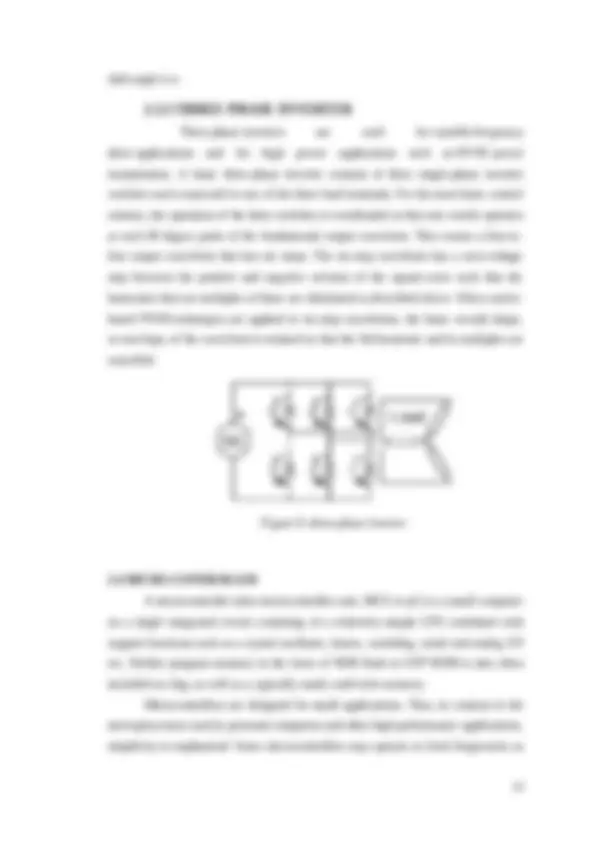
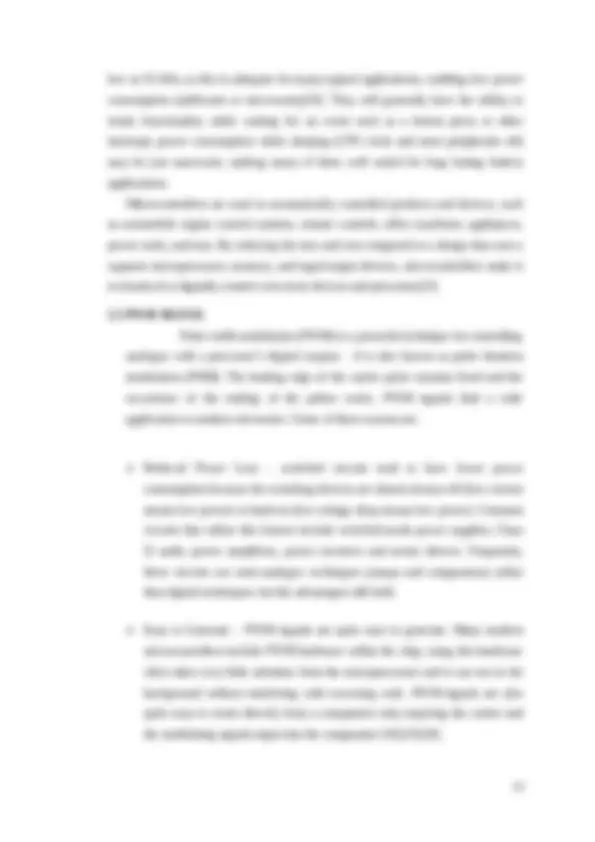
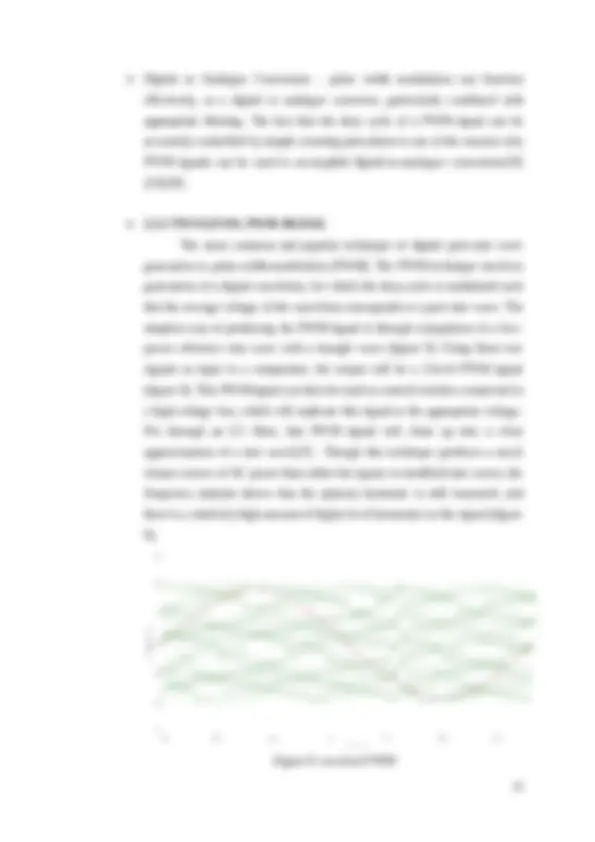
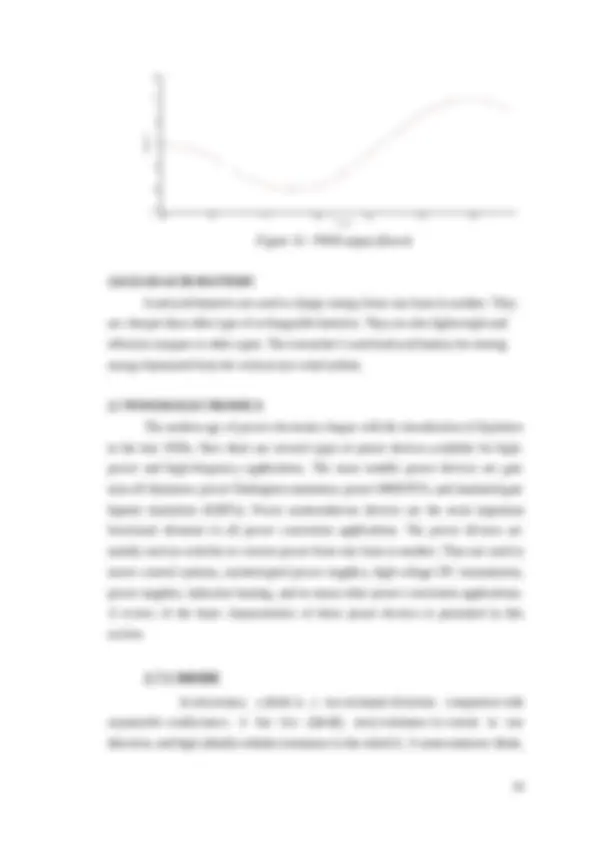
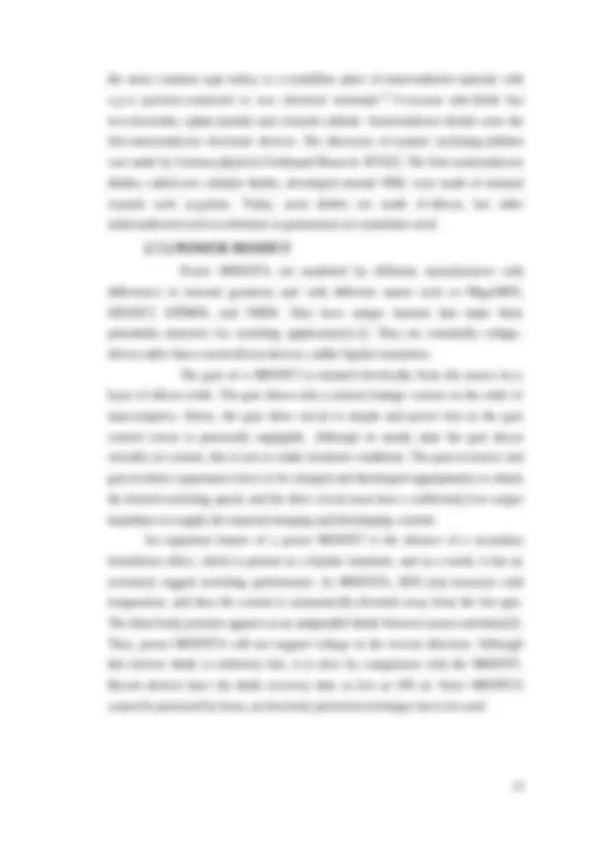
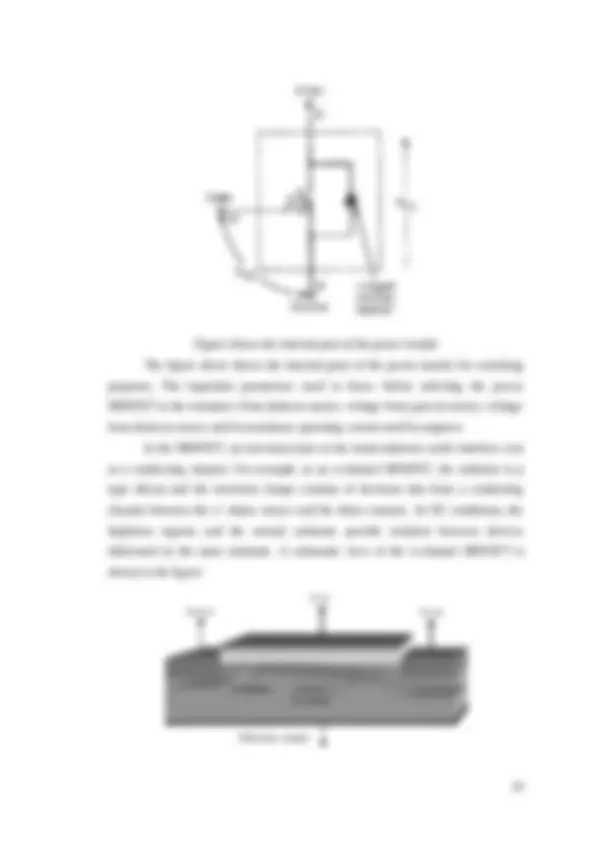
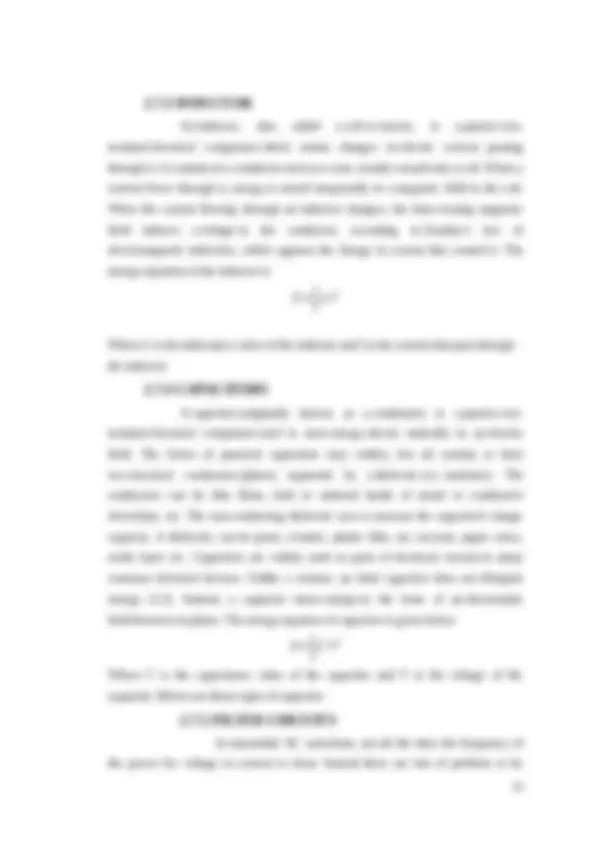
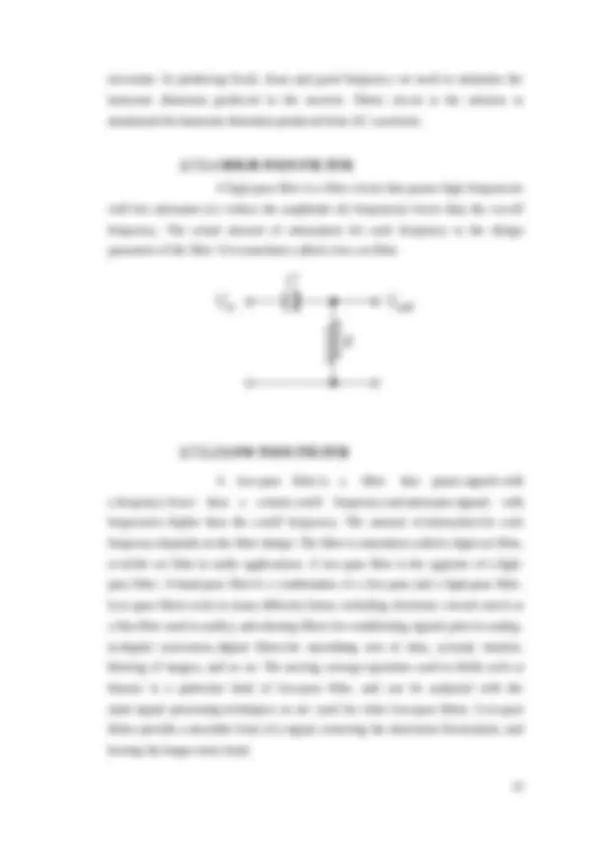
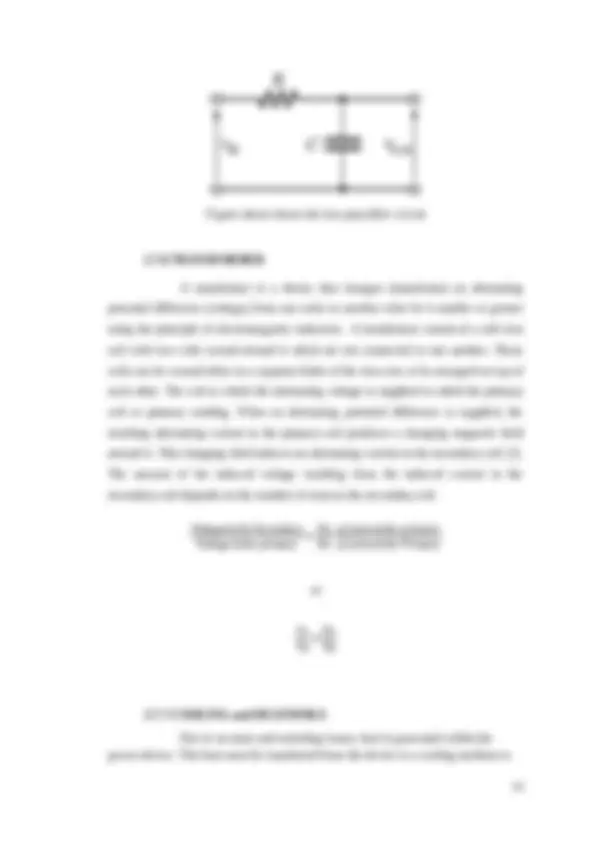
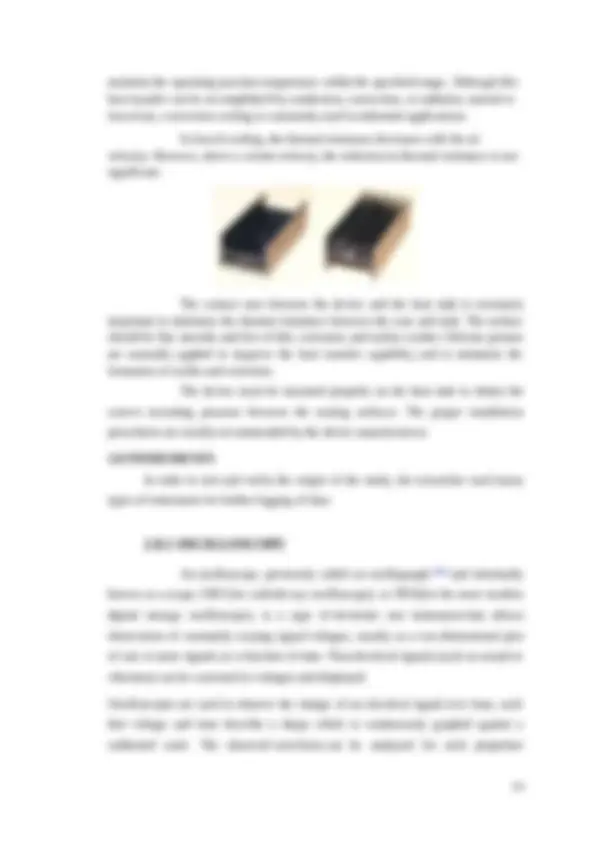
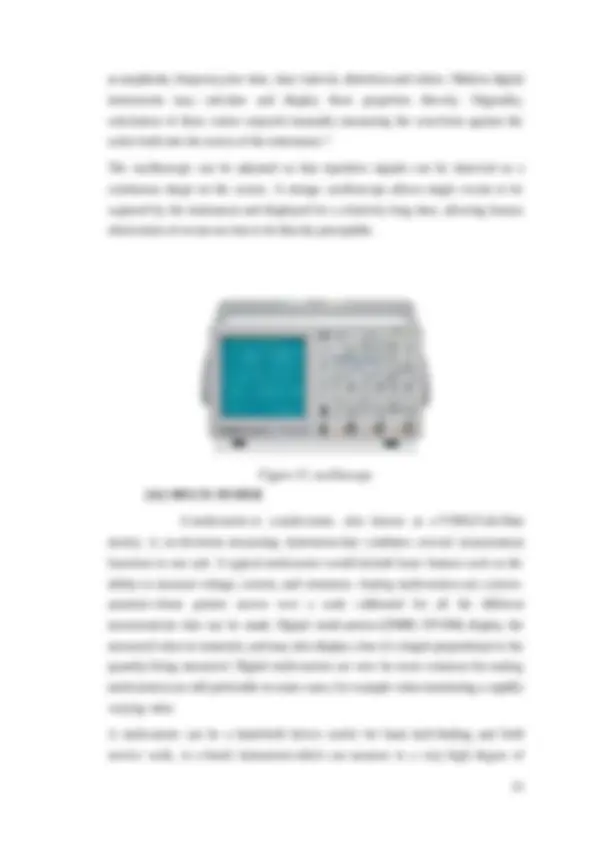
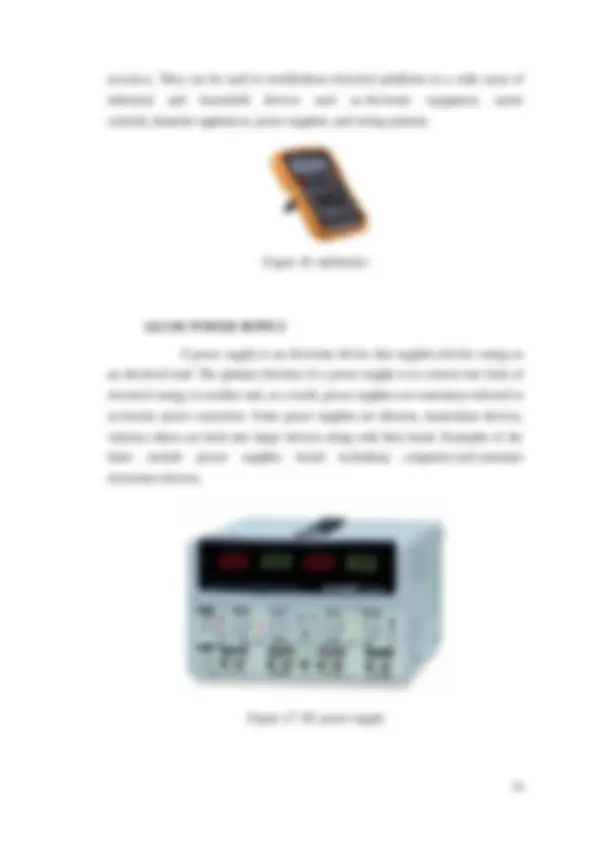
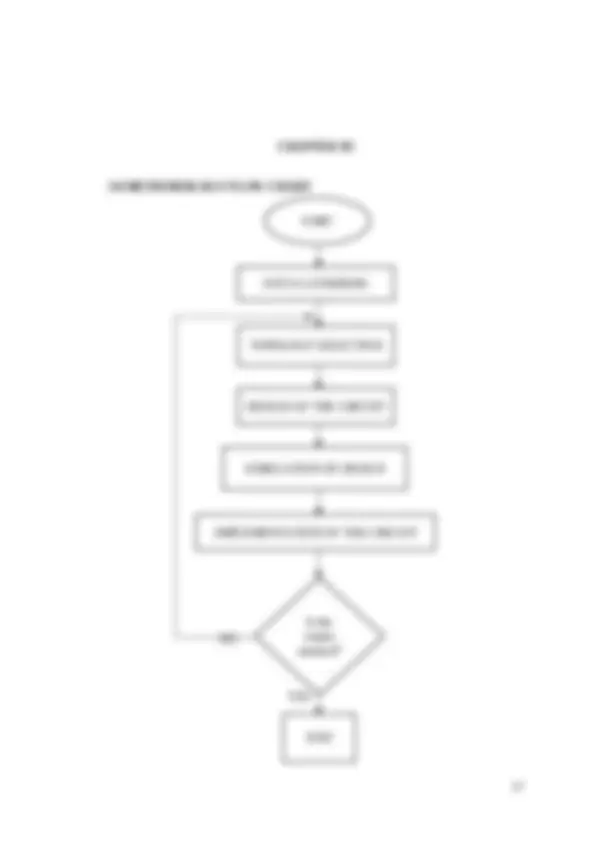
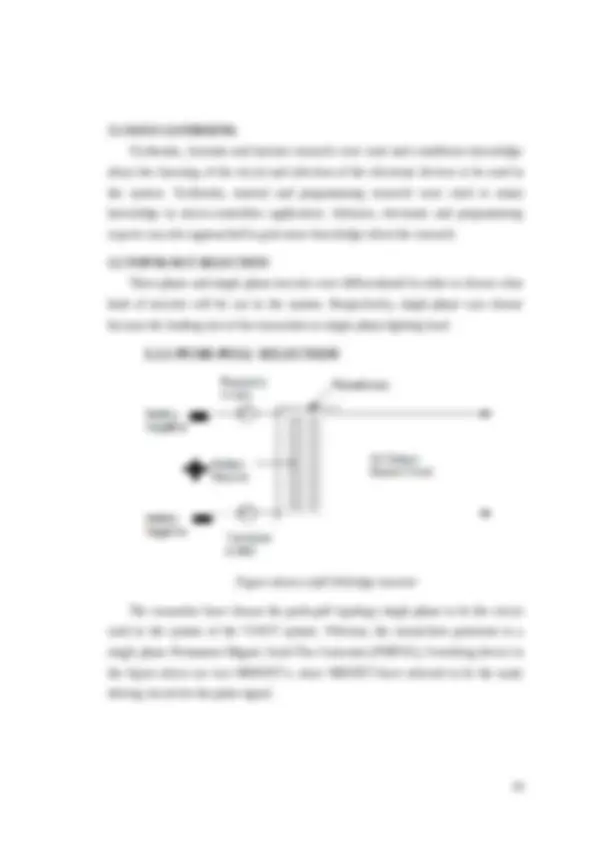
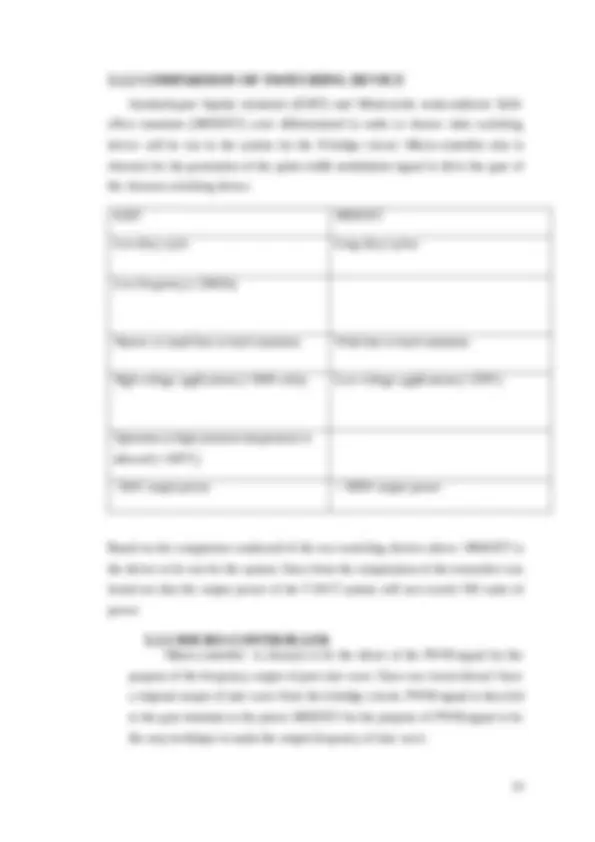
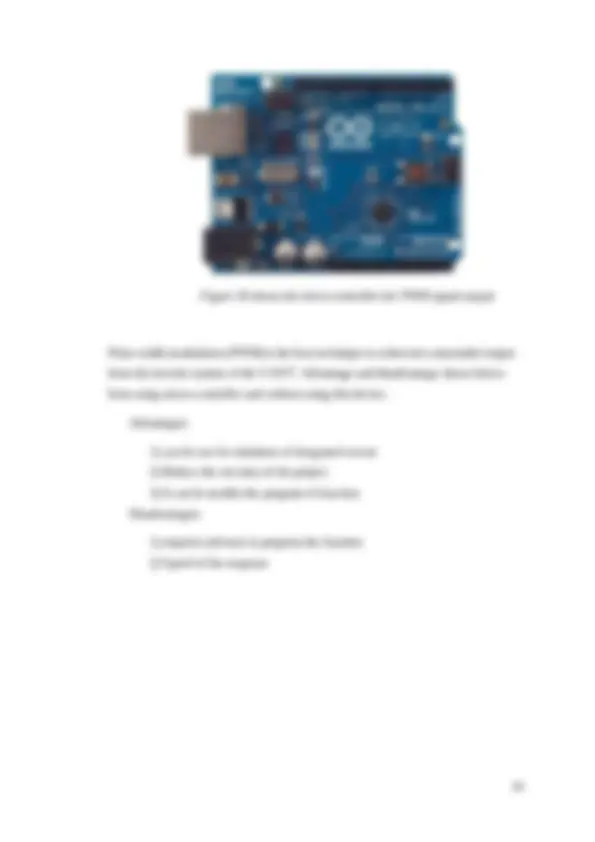
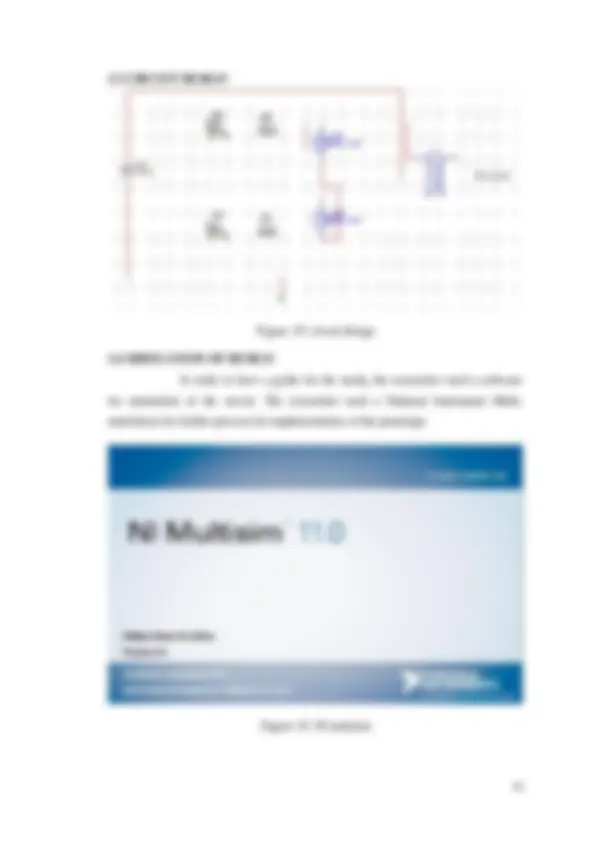
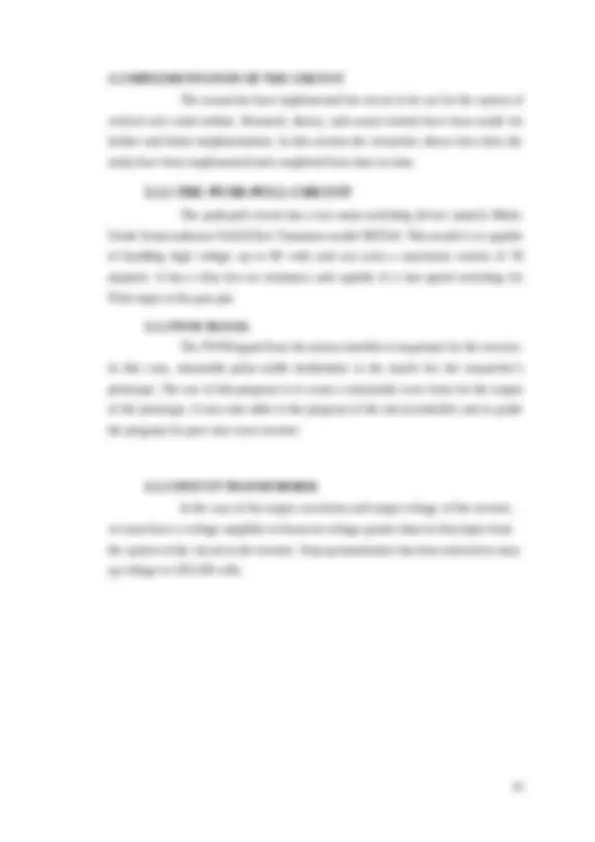
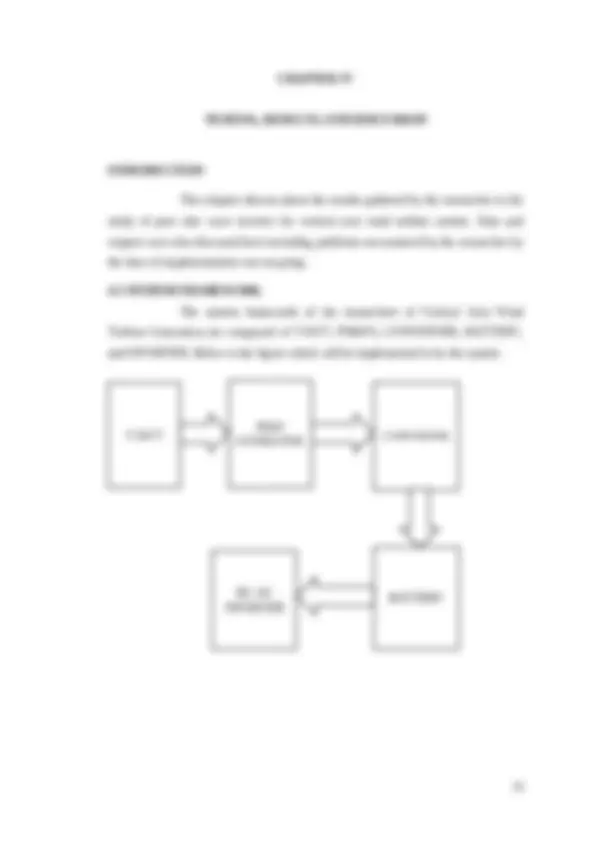
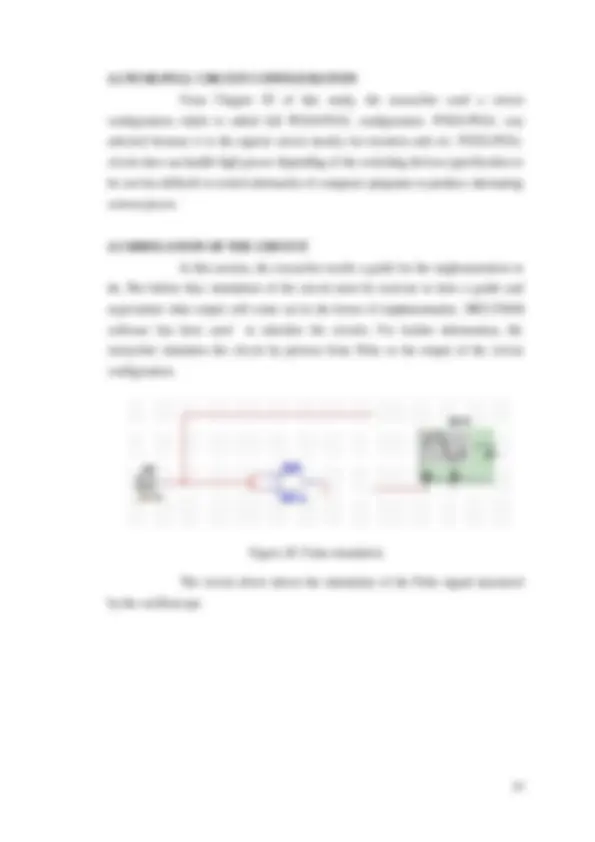
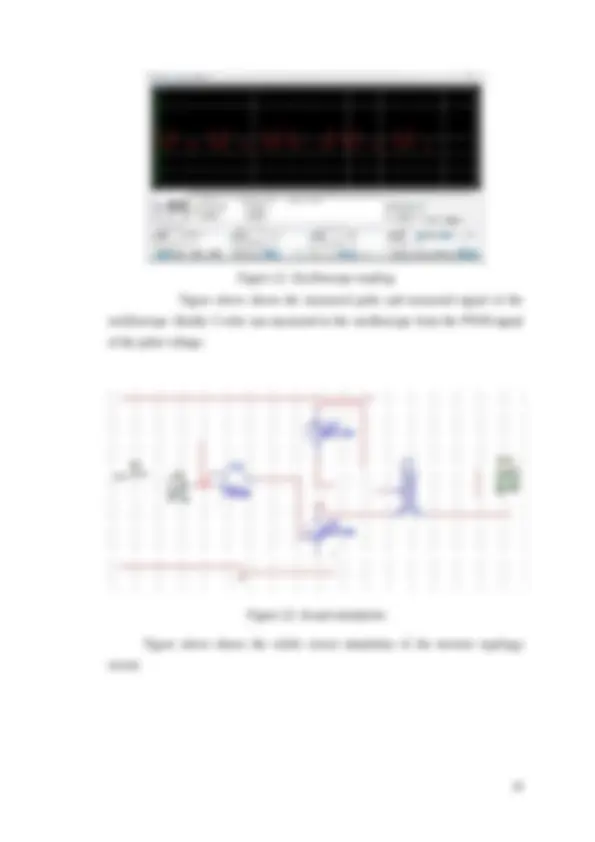
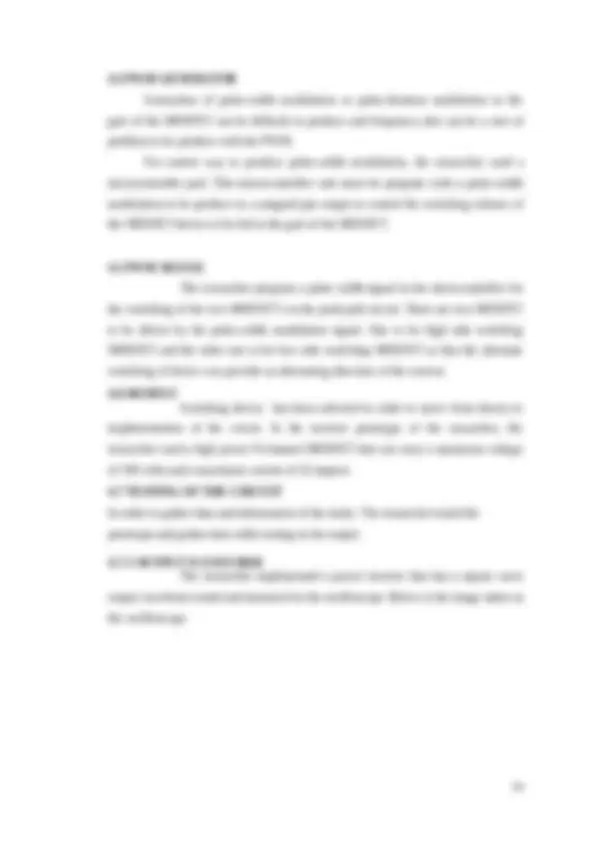

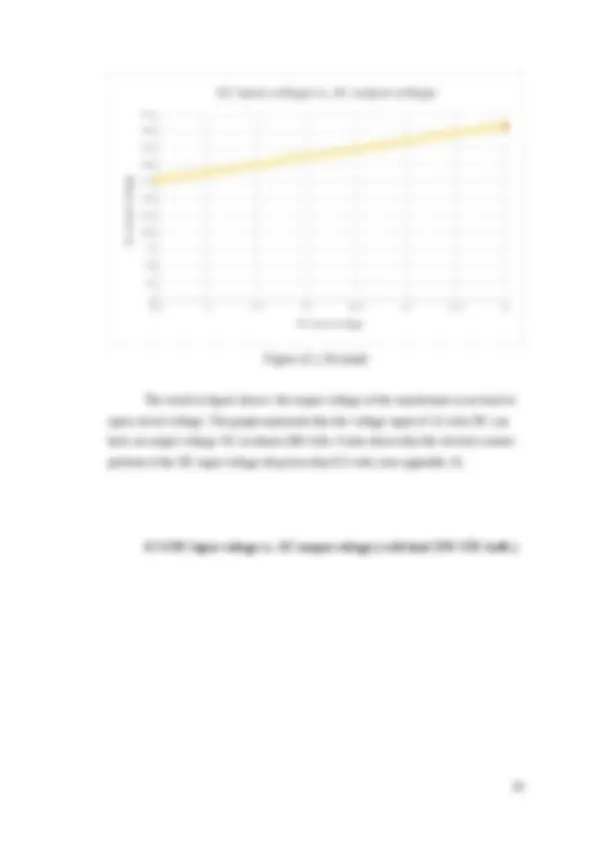
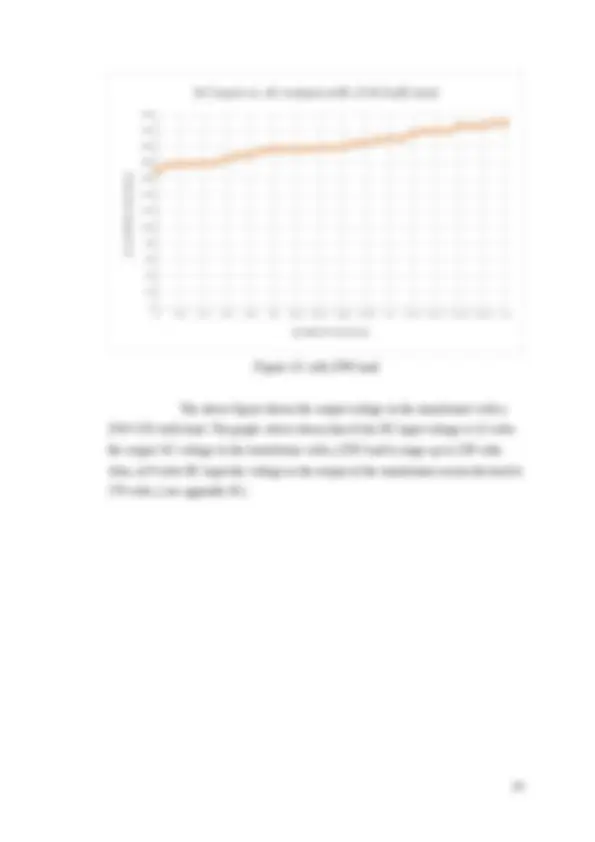
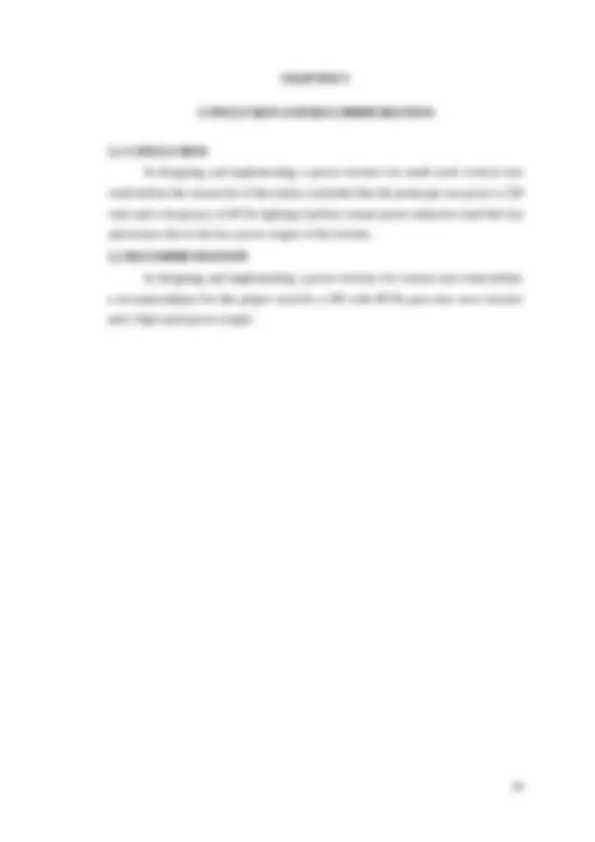
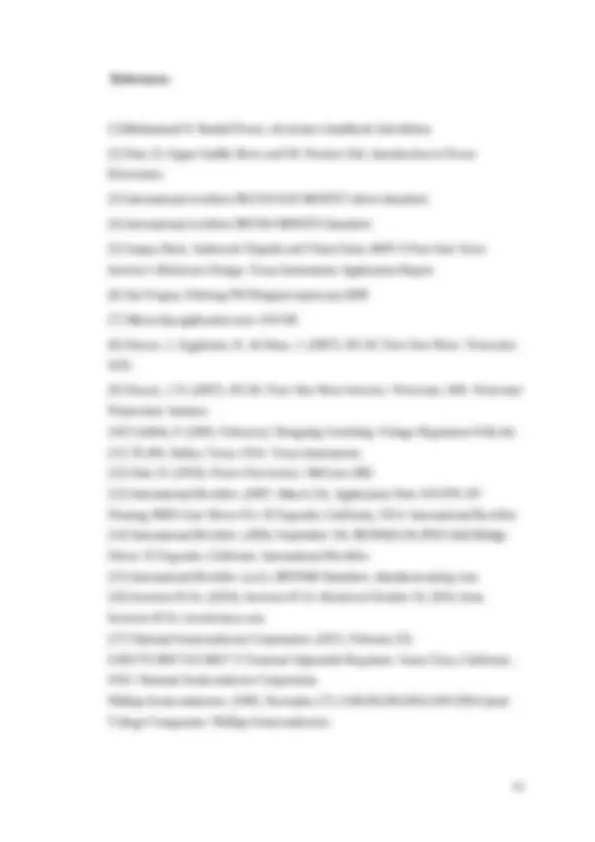
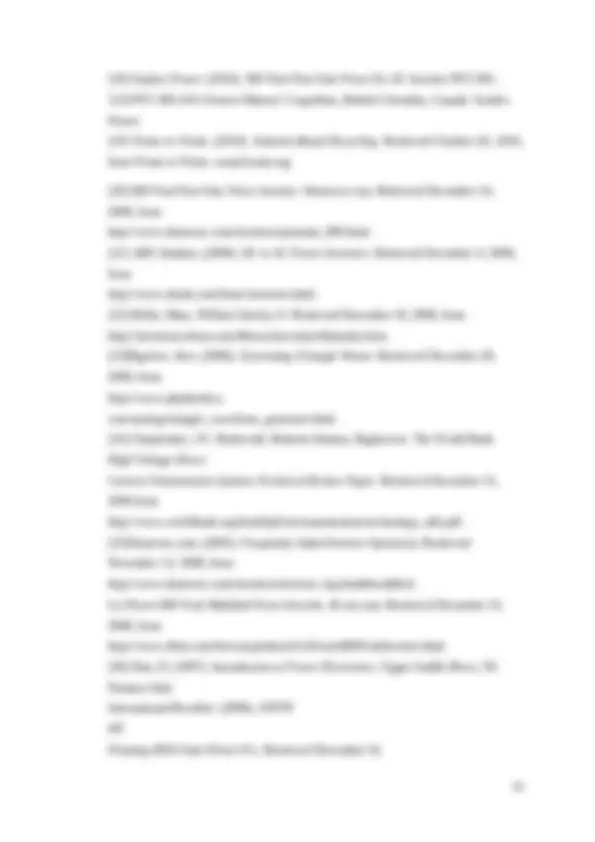
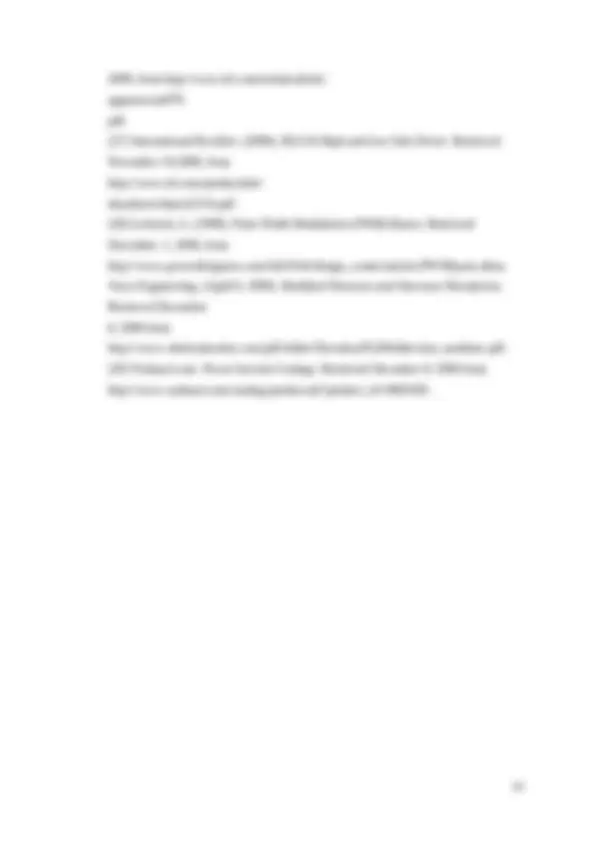


Study with the several resources on Docsity

Earn points by helping other students or get them with a premium plan


Prepare for your exams
Study with the several resources on Docsity

Earn points to download
Earn points by helping other students or get them with a premium plan
Community
Ask the community for help and clear up your study doubts
Discover the best universities in your country according to Docsity users
Free resources
Download our free guides on studying techniques, anxiety management strategies, and thesis advice from Docsity tutors
POWER INVERTER for VERTICAL AXIS WIND TURBINE
Typology: Thesis
1 / 43

This page cannot be seen from the preview
Don't miss anything!




































With the increasing use of renewable energy the need to have a good quality single-phase inverter has become important. The conventional technology used for single phase inverters typically consists of either square-wave or pulse-width modulation inverters. The square wave type is the simplest method to produce AC from DC; however, it suffers from low frequency harmonics which causes difficulty in filtering out the noise to prevent these harmonics. The PWM inverter, on the other hand, forces the harmonics to be way up higher than the fundamental (line) frequency; thus, easing up the filtering requirement of the inverter. However, the major drawback of the PWM inverter is the increased switching losses due to the frequent switching actions of the electronic switches within the inverter. Power inverter is a device that converts electrical power from DC form to AC form using electronic circuits. It is typical application is to convert battery voltage into conventional household AC voltage allowing you to use electronic devices when an AC power is not available. There are basically three kinds of Inverter out of which, the first set of inverters made, which are now obsolete, produced a Square Wave signal at the output. The Modified Square Wave also known as the Modified Sine Wave Inverter produces square waves with some dead spots between positive and negative half- cycles at the output. The cleanest Utility supply like Power source is provided by pure sine wave inverter. The present Inverter market is going through a shift from traditional Modified Sine Wave Inverter to Pure Sine Wave inverters because of the benefits that these inverters offer. 1.2 OBJECTIVE OF THE STUDY DC-AC inverter nowadays is very important since renewable energy boosts its demand to produce power to the utility-grid or even the home-made generation for power back-up. The objective of this research covers the design and implementation of the DC-AC inverter for vertical axis wind turbine generation system with a output voltage of 230 volts AC and a frequency of 60 Hz.
Today, power inverters are highly in-demand when we talk about renewable energy resources. Since renewable energy is increasing also in demand for harnessing power all around the world for emergency purposes and for the sake of our electricity generation in the future. Power inverter for Vertical Axis Wind Turbine is also needed because the generator of the researchers is an Alternating Current Generator which produces electromagnetic force from rotating its turbine coupled through the generator. The output rotation of the turbine to the generator that produces electromagnetic force will pass through the AC-DC converter with charge controller for storing the energy to the battery then after the battery will be fully charge, the DC- AC inverter will process the conversion of Direct current input to Alternating current output. 1.4 SIGNIFICANCE OF THE STUDY Power electronics and electrical generation combines its technique to provide energy to the consumers. One of the basic and important device used to generate electricity from the power plant and even homemade electric generation is the inverter. Inverter convert DC form to AC form which is alternating current is the reason why we need inverter. Utility grids provide alternating current to the consumers for economical purposes. First, AC power is economical when we talk about transmitting the power from the generation company because conductors that will be used is lesser the area compared to DC power. Second, AC power can be stepped-up and stepped down compared to DC power that doesn’t have frequency. Finally, AC power is the universal power that we can used to power up our appliances, machines and even hospital machines and industrial plants. 1.5 SCOPE AND LIMITATION OF THE STUDY The researcher’s scope and limitation of this study will limit only in the design and implementation for the DC-AC inverter circuit for the Vertical Axis Wind Turbine.
Mostly today, renewable energy source have become more progress in harnessing power since devices for gathering such kind of energy is highly in-demand for power back-up and even stand-alone energy source for residential, commercial, and industrial facilities and companies which is inverter is highly important also for applications on devices such as wind generators and PV cells. 2.1 DIRECT versus ALTERNATING CURRENT In additional information of this study, there are only two forms of electrical transmission, Direct current (DC) and Alternating current (AC) system. Each has their own advantage and disadvantages. DC power is simply a source of electrical energy across a load resulting in constant current. A battery is a most common power source of all load system. This is widely used in digital circuitry as it provides constant high and low values which represents the basic 1 and 0 bits used in computers. Thomas Edison, inventor of the light bulb, was the first to transmit electricity commercially using DC power lines. It was not capable of transmitting over long- distance as the technology did not exist to step-up the voltage along the transmission path over which the power dissipate. The equation below demonstrates how high voltage is necessary to decrease power loss.
When the voltage is increased, the current decreases and the power loss decreases exponentially. Therefore, high voltage transmission decreases power loss. AC power was found to be much more efficient in transmitting power as it alternates two voltages at a specific frequency, making it easy to step-up and step-down voltage using transformer.
DC to AC inverter falls on the types of inverter to be use and from the time-to-time inventions of its output from the DC source such as batteries. Square wave, modified sine wave and pure sine wave inverter are the types of inverters. Fig. 1 shows three types of inverter output
Figure 3. Push-pull topology of square-wave inverter 2.1.1.1.1 THEORY OF OPERATION Figure 3A Figure 3B Figure 3A shows that the upper switch is closed that causes the current to flow then induces voltage to the secondary turn of the transformer. While on the other hand, lower switch is open so that it will avoid short circuitry of the circuit. Figure 3B shows that lower switch is closed while upper switch is open that causes the current to
flow from the battery and induces voltage in the secondary turn of the transformer. (note: only one switch at a time is closed). Finally, most square wave inverters have mediocre efficiency (typically about 80%), and the idle power draw is relatively high.
A modified sine wave is similar to a square wave but instead has a “stepping” look to it that relates more in shape to a sine wave. This can be seen in Figure 4, which displays how a modified sine wave tries to emulate the sine wave itself. The waveform is easy to produce because it is just the product of switching between three values at set frequencies, thereby leaving out the more complicated circuitry needed for a pure sine wave hence provides a cheap and easy solution to powering devices that need AC power [18][20]. However it does have some drawbacks as not all devices work properly on a modified sine wave, products such as computers and medical equipment are not resistant to the distortion of the signal and must be run off of a pure sine wave power source. Modified sine wave inverters approximate a sine wave and have low enough harmonics that do not cause problem with household equipment’s. The main disadvantage of the modified sine wave inverter is that peak voltage varies with the battery voltage. Fig. 4 shows the output waveform of modified sine wave
A true sine wave or pure sine wave inverter converts the DC supply into a near perfect or pure sine wave, replicating the supply attained from a domestic AC power source such as a plug socket. The sine wave has a very little harmonic distortion resulting in a very “clean” supply and makes it ideal for running electronic system such as computers, motors and microwave ovens and other sensitive equipment without causing problems or noise[5]. Things like mains battery chargers also run better on pure sine wave inverters. There are two methods in which the low voltage DC power is inverted. The first being the conversion of the low voltage DC power to a high voltage DC source, and then the conversion of the high DC source to an AC waveform, using different switching techniques[8][20]. Another method to complete the desired outcome would be to first convert the low voltage DC power to AC using different switching techniques, and then use a transformer to step-up the voltage to 220 volts. Fig. 5 shows the output waveform of pure sine wave inverter
The DC-AC inverters are usually in two types. First, is the single-phase inverter which is the load terminal has two-output wires. While the other is the three- phase inverter which has a three-output load terminal device.
It consists of two semiconductor switches T1 and T2.These switches may be BJT, Thyristor, MOSFET, IGBT etc with a commutation circuit. D and D2 are called Freewheeling diode also known as the Feedback diodes as they feedback the load reactive power. Figure 6 half-bridge S1 S2 Voltage ON OFF +V OFF ON -V T1 is ON during the positive half cycle of the output voltage, which makes Vout=Vo/2 and T2 is ON during the negative half cycle which makes Vout= -Vo/2. The both switches must operate alternatively otherwise there may be a chance of short circuiting. In case of resistive load, the current waveform follows the voltage waveform but not in case of reactive load. The
shift angle is π.
Three-phase inverters are used for variable-frequency drive applications and for high power applications such as HVDC power transmission. A basic three-phase inverter consists of three single-phase inverter switches each connected to one of the three load terminals. For the most basic control scheme, the operation of the three switches is coordinated so that one switch operates at each 60 degree point of the fundamental output waveform. This creates a line-to- line output waveform that has six steps. The six-step waveform has a zero-voltage step between the positive and negative sections of the square-wave such that the harmonics that are multiples of three are eliminated as described above. When carrier- based PWM techniques are applied to six-step waveforms, the basic overall shape, or envelope, of the waveform is retained so that the 3rd harmonic and its multiples are cancelled. Figure 8. three-phase inverter 2.4 MICRO-CONTROLLER A microcontroller (also microcontroller unit, MCU or μC) is a small computer on a single integrated circuit consisting of a relatively simple CPU combined with support functions such as a crystal oscillator, timers, watchdog, serial and analog I/O etc. Neither program memory in the form of NOR flash or OTP ROM is also often included on chip, as well as a, typically small, read/write memory. Microcontrollers are designed for small applications. Thus, in contrast to the microprocessors used in personal computers and other high-performance applications, simplicity is emphasized. Some microcontrollers may operate at clock frequencies as
low as 32 kHz, as this is adequate for many typical applications, enabling low power consumption (milliwatts or microwatts)[16]. They will generally have the ability to retain functionality while waiting for an event such as a button press or other interrupt; power consumption while sleeping (CPU clock and most peripherals off) may be just nanowatts, making many of them well suited for long lasting battery applications. Microcontrollers are used in automatically controlled products and devices, such as automobile engine control systems, remote controls, office machines, appliances, power tools, and toys. By reducing the size and cost compared to a design that uses a separate microprocessor, memory, and input/output devices, microcontrollers make it economical to digitally control even more devices and processes[23]. 2.5 PWM SIGNAL Pulse width modulation (PWM) is a powerful technique for controlling analogue with a processor’s digital outputs.. It is also known as pulse duration modulation (PDM). The leading edge of the carrier pulse remains fixed and the occurrence of the trailing of the pulses varies. PWM signals find a wide application in modern electronics. Some of these reasons are: Reduced Power Loss – switched circuits tend to have lower power consumption because the switching devices are almost always off (low current means low power) or hard-on (low voltage drop means low power). Common circuits that utilize this feature include switched-mode power supplies, Class D audio power amplifiers, power inverters and motor drivers. Frequently, these circuits use semi-analogue techniques (ramps and comparators) rather than digital techniques, but the advantages still hold. Easy to Generate – PWM signals are quite easy to generate. Many modern microcontrollers include PWM hardware within the chip; using this hardware often takes very little attention from the microprocessor and it can run in the background without interfering with executing code. PWM signals are also quite easy to create directly from a comparator only requiring the carrier and the modulating signals input into the comparator [16][23][26].
Figure 10. Example of generated PWM signal 2.5.2 THREE LEVEL PWM SIGNAL In order to create a signal which is closer to a true sine wave, a 3 level PWM signal can be generated with high, low, and zero voltage levels. For the resulting 3-level PWM signal to correspond to a sine wave, the signal comparison stage must also be 3-level (figure 11). A triangle wave is used as it is in the 2-level PWM comparison, but it half the amplitude and summed with a square wave to compare one half of the sine reference signal at a time. The resulting PWM signal is used to control one half of an H-bridge (figure 12), which controls how long the bus voltage is allowed through to the load. The other half of the H-bridge controls the polarity of the voltage across the load, and is controlled by a simple square wave of the same frequency and in phase with the sine signal. Generally, this square wave can simply be created in a stage of the sine wave generation circuit. A virtual example of such a 3-level circuit we simulated is shown in figure 12. The resulting 3-level high-voltage PWM signal can be filtered into a very close approximation of the desired sine wave. It should be noted that the simulations we did for this technique utilized a very low switching frequency for the triangle wave, so the PWM switching frequency is also low. This was done so that the waveforms would be easy to view and understand. In reality, a switching frequency above 20 kHz would be used to keep inductance ringing outside the range of human hearing.
Figure 11. Three-level PWM control signal Figure 12. PWM simulation circuit Figure 13. PWM output unfiltered
the most common type today, is a crystalline piece of semiconductor material with a p–n junction connected to two electrical terminals.[5]^ A vacuum tube diode has two electrodes, aplate (anode) and a heated cathode. Semiconductor diodes were the first semiconductor electronic devices. The discovery of crystals' rectifying abilities was made by German physicist Ferdinand Braun in 1874[2]. The first semiconductor diodes, called cat's whisker diodes, developed around 1906, were made of mineral crystals such as galena. Today, most diodes are made of silicon, but other semiconductors such as selenium or germanium are sometimes used.
Power MOSFETs are marketed by different manufacturers with differences in internal geometry and with different names such as MegaMOS, HEXFET, SIPMOS, and TMOS. They have unique features that make them potentially attractive for switching applications[1,2]. They are essentially voltage- driven rather than current-driven devices, unlike bipolar transistors. The gate of a MOSFET is isolated electrically from the source by a layer of silicon oxide. The gate draws only a minute leakage current on the order of nano-amperes. Hence, the gate drive circuit is simple and power loss in the gate control circuit is practically negligible. Although in steady state the gate draws virtually no current, this is not so under transient conditions. The gate-to-source and gate-to-drain capacitances have to be charged and discharged appropriately to obtain the desired switching speed, and the drive circuit must have a sufficiently low output impedance to supply the required charging and discharging currents. An important feature of a power MOSFET is the absence of a secondary breakdown effect, which is present in a bipolar transistor, and as a result, it has an extremely rugged switching performance. In MOSFETs, RDS (on) increases with temperature, and thus the current is automatically diverted away from the hot spot. The drain body junction appears as an antiparallel diode between source and drain[2]. Thus, power MOSFETs will not support voltage in the reverse direction. Although this inverse diode is relatively fast, it is slow by comparison with the MOSFET. Recent devices have the diode recovery time as low as 100 ns. Since MOSFETs cannot be protected by fuses, an electronic protection technique has to be used.
Figure shows the internal part of the power mosfet The figure above shows the internal parts of the power mosfet for switching purposes. The important parameters need to know before selecting the power MOSFET is the resistance from drain-to-source, voltage from gate-to-source, voltage from drain-to-source and its maximum operating current rated in amperes. In the MOSFET, an inversion layer at the semiconductor–oxide interface acts as a conducting channel. For example, in an n -channel MOSFET, the substrate is p type silicon and the inversion charge consists of electrons that form a conducting channel between the n +^ ohmic source and the drain contacts. At DC conditions, the depletion regions and the neutral substrate provide isolation between devices fabricated on the same substrate. A schematic view of the n -channel MOSFET is shown in the figure.